“I am anxious, and it soothes me to express myself here. It is like whispering to one’s self and listening at the same time.”
—excerpt from Mina Murray’s diary, Dracula by Bram Stoker (1897)
The epistolary format weaves a powerful illusion of authenticity, framing fiction as real-life, firsthand surviving documentation. In the same way the warning “based on a true story…” sends a chill through the spine at the start of a scary movie, the voyueristic sense of realness sets the stage for epistolary horror to unfold. Letters, diaries, phone records, emails, police reports—these are all dated or even time-stamped in epistolary fiction, presented in very specific and sometimes extremely official-looking ways. It makes the story feel real, as if the reader is discovering an old box of loose papers that they shouldn’t be looking at—it seems excessively personal and fascinates us almost in the same way that true crime can fascinate. The reader gets pulled into the details, wrapped up in the cleverly crafted reflections and echoes of reality…
Epistolary fiction reached the height of its popularity during the 18th century, though its effectiveness might best be seen in macabre 19th-century works like Mary Shelley’s Frankenstein and Bram Stoker’s Dracula. It has resurfaced in horror again and again over the centuries. In more recent years, epistolary horror has thrived in the novella—blending brevity with supercharged intimacy for unforgettable results.
There is a compelling duality in epistolary fiction, especially epistolary horror fiction. With written documents incorporated into the narrative, the reader knows events have already taken place, and yet these events still feel deeply present and immediate. In the quote above from Dracula, Mina likens the effect of journaling to “whispering to one’s self and listening at the same time.” This sensation of listening and experiencing simultaneously rests at the heart of all good fiction, but epistolary fiction heightens our immersion.
Below, you’ll find a list of eight epistolary horror novels and novellas from the last few centuries that really embrace Mina’s notion, enfolding it into their deep, dark hearts.
Frankenstein by Mary Shelley (1818)
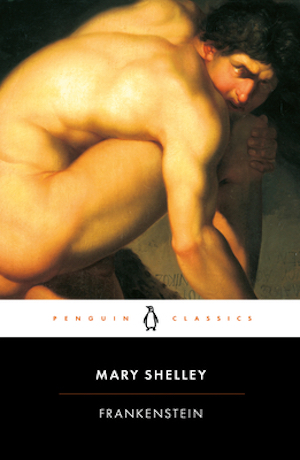
Mary Shelley is regarded as the “mother of science fiction” but Frankenstein is every bit a horror story as it is a science fictional one. Told from multiple first-person perspectives, Frankenstein uses letters and journal entries to impart the tale of a Victor Frankenstein and the creature he has—for better or worse—brought to life. What ensues is the result of Victor’s scientific pursuit and subsequent abandonment of his own creation, a story that grapples with the meaning of existence as well as what it means to create. “The general character of the tale indeed resembles nothing that ever preceded it …” wrote Mary’s husband, the poet Percy Shelley, in a review published a decade after his death. “An exhibition of intellectual and imaginative power, which we think the reader will acknowledge has seldom been surpassed.”
Dracula by Bram Stoker (1897)
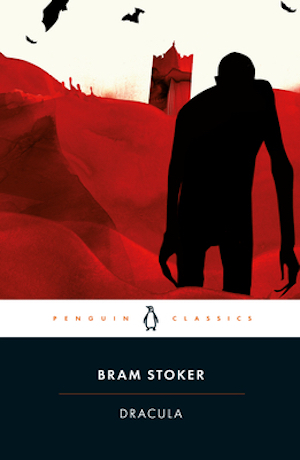
This year marks the 125th anniversary of Dracula’s first publication. Since then, the novel has been adapted again and again (though rarely faithfully) with the title character played on screen by the likes of Bela Lugosi and Christopher Lee. Dracula himself is an iconic character, enduring as one of the canonical and most recognizable creatures in horror literature.
Through letters, diaries and newspaper clippings, Stoker’s novel introduces an ensemble of compelling characters as it frames the story of a what would become literature’s most infamous vampire. As an epistolary novel, it remains just as immersive and mystifying today as it was when it was originally published and, like Frankenstein, it stands as one of the pillars of early horror writing.
Carrie by Stephen King (1974)

Stephen King debuted as a novelist with this epistolary story of a lonely, bullied teen by the name of Carrie White. The book traces her discovery of telekinetic powers as an isolated youth, abused by both a religious zealot of a mother and her unsympathetic, merciless classmates. Through the use of letters, newspaper clippings, and book passages, King expertly pieces together a series of events which lead toward a devastating conclusion. The culmination of such “documentation” gives a rich, full picture of Carrie’s story from all sides. The structure feels simultaneously formal yet intimate, and launched King as one of the preeminent horror writers of his time.
House of Leaves by Mark Z. Danielewski (2000)
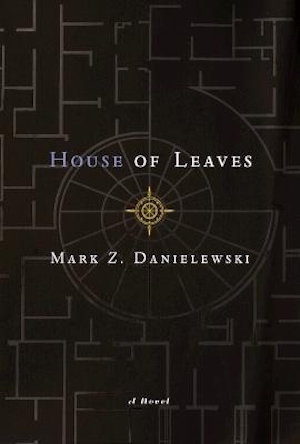
House of Leaves is known for being a massive tome of a book. You don’t just read it, you tackle it—because what Danielewski has created here is a contact sport. It also one of (if not the) longest epistolary horror novels ever published, coming in at 709 pages.
The novel centers on a couple who’ve moved into a bizarre house that is larger on the inside than it is on the outside. A simple horror premise, right? Not quite. House of Leaves is a book that seems to break every rule, laden with footnotes and filled with unique passages, some of which require the reader to rotate the physical book in order to clearly see the text. The story unfolds through various texts and manuscripts, experimenting with form as well as typography along the way. It is a novel unlike any other and came out during a time when epistolary horror wasn’t necessarily in fashion, making it even more striking at its time of release.
Dark Matter by Michelle Paver (2010)
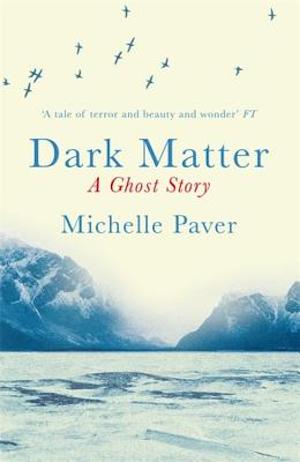
Told through journal entries of wireless operator Jack Miller, Dark Matter follows a group of scientists as they set out on a grueling Arctic expedition in 1937. Jack’s emotions are in turmoil long before he reaches the Arctic and as events unfold, he faces deeper and deeper isolation. Framing the story as one man’s journal heightens the sense of dread in this work. It puts the reader directly into the mind of someone who finds himself cut off in a dark, unfamiliar land. It’s “a spellbinding read,” as Eric Brown notes in a review for The Guardian—“the kind of subtly unsettling, understated ghost story MR James might have written had he visited the Arctic.”
The Night Visitors by Jenn Ashworth and Richard V. Hirst (2017)
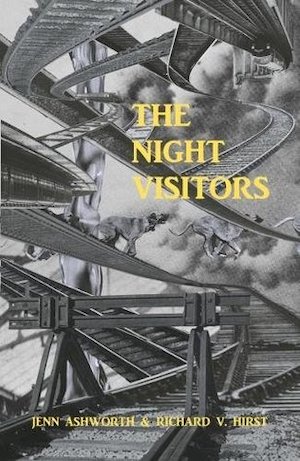
We start to see the current rise of the epistolary horror novella here with The Night Visitors. The book is told through the email correspondence of two cousins, Alice and Orla, who are connected by blood to an infamous 1917 massacre. Part ghost story, part thriller, The Night Visitors is unique not only in its format but also in the way it was written. Co-authors Jen Ashworth and Richard V. Hirst each wrote from the perspective of a different character, meaning that the correspondents in the novella are speaking from the perspective of two different writers’ voices and styles. It adds a certain flavor to the epistolary structure and works within the brevity of the novella as a form, drawing us into an increasingly unsettling tale.
Things Have Gotten Worse Since We Last Spoke by Eric LaRocca (2021)
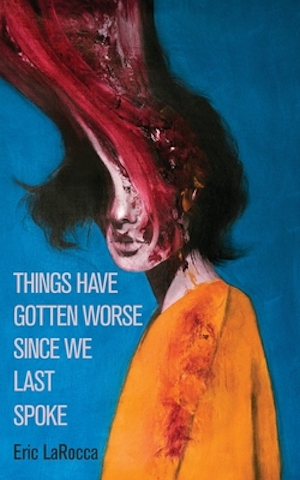
Eric LaRocca’s hit novella was one of the biggest horror books of 2021, and with good reason. It takes place in the early 2000s and uses email and chatroom logs of Zoe and Agnes, two women who meet online after one of them posts a listing to sell an antique apple peeler. Their psychosexual relationship develops via their online correspondence, escalating at a propulsive and increasingly disturbing pace.
Things Have Gotten Worse Since We Last Spoke is a harrowing story, easily read in one sitting, that takes the epistolary format and grounds it in a very specific point in time when chatrooms were finding an avid audience. It is visceral, chilling, and unforgettable in its brief, tender brutality.
The Secret Skin by Wendy Wagner (2021)
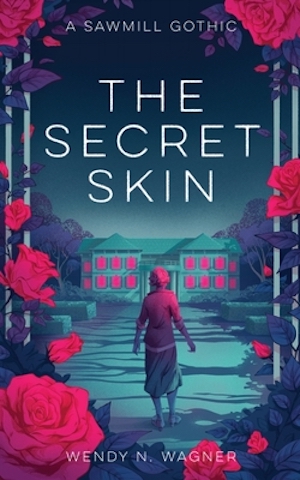
The Secret Skin takes reader back to a time when handwritten letters were the primary mode of long-distance communication. This beautifully gothic novella chronicles an artist’s return to her grand childhood home on the coast of Oregon in the 1920s. June Vogel has not set foot on her family’s estate in six years, but is persuaded by her brother to come and look after his young daughter while he’s away honeymooning with his new bride. All of June’s letters, addressed to her lover, are exquisitely detailed. There is a richness to them which clings to the imagination, whether it be descriptions of the grounds themselves, the ghosts that seem to linger on the estate, or June’s own personal relationships. Through them, Wagner has crafted a brooding epistolary story of family, love, and identity with The Secret Skin that resonates deeply with the soul.
Emily Ruth Verona received her Bachelor of Arts in Creative Writing and Cinema Studies from the State University of New York at Purchase. Previous publication credits include fiction featured in two anthologies as well as magazines such as The Pinch, Lamplight Magazine, Mystery Tribune, The Ghastling, and Black Telephone Magazine. Her essays/articles have appeared online for Bookbub, Litro, BUST, and Bloody Women. She lives in New Jersey with a very small dog.










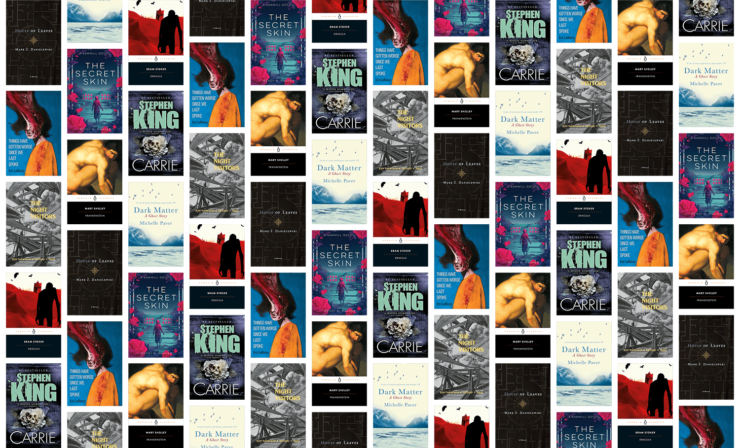
Dracula must have been a great read in 1897, but it was very frustrating to read it in modern times. I still highly recommend it, but as a genre-savvy reader, I kept wanting to shout at the characters for all the mistakes they were making.
The early novels were written as letters because authors hadn’t figured out viewpoint yet.
Those of us who have read Samuel Richardson’s PAMELA consider it a horror novel, for the reader, not the characters. That thing would not end.
I went back through my personal reviews and found these letter and journal-based novels.
SORCERY AND CECELIA: OR THE ENCHANTED CHOCOLATE POT, Patricia C. Wrede and Caroline Stevermer. Regency-based historical fantasy. Book 1 of a short series. Kate and Cecelia exchange letters about life in the country and magical London. Kate accidentally makes an enemy of an evil sorceress and gains a protector in a magical lord who faces this woman and his former magic tutor. Meanwhile, Cecily learns that the lord’s enemy is her neighbor, and the lord’s best friend is busy spying on both of them. Despite the letter format and the cold narrative that entails, the novel was engrossing and amusing, and I had trouble putting it down.
MAPLECROFT: THE BORDEN DISPATCHES, Cherie Priest. Traditional horror/dark fantasy. 1895 USA. The story is told through letters and journal entries of the Borden sisters, the local doctor, and various other people who become victims or try to solve this mystery. After Lizzie Borden is found not guilty of her father and stepmother’s murders, she and her older sister Emma move to Maplecroft House at the ocean’s edge of Fall River. They have several dark secrets. One is not who killed their parents but why they were murdered. Monstrous things keep trying to get into their house, and some of the town folks are beginning to exhibit the same symptoms their parents had. What is causing this and how can they stop it? This novel is set within the HP Lovecraft mythos with a sense of creeping horror that is more effective than Lovecraft’s turgid prose, but with the same problematic mix of horror with science.
Some of these I didn’t even know where written in this style. I’m going to have to add some classics to my reading list this summer.
Full disclaimer: I read Frankenstein and did not like it at all.
I would really not label it a horror story. I found the characters whiny, angsty; I neither liked the monster nor Victor. (The best part, for me, was the framing story of the ship in the Arctic.)
The only horror (for me) was the thought of the story going on in the same way for another 200 pages. (Which it did.)
On a bit more serious note: I really don’t think that the book is a horror story. It is a study of (19th century) morals and ethical questions regarding scientific progress.
Not knowing much about the story, I wanted to read it because it is a foundational text for both the SF and the horror genre – or at least, that’s what I thought.
I expected there to be some horror elements; I wanted to read a horror story.
But the book entirely disappointed in this regard.
Anyway, that’s just my view on it.
I’m with Thomas: I too wanted to shout at the characters (especially the male ones) about their many errors, assumptions and instances of arrogance. Even the Count himself, who should have mopped the floor with his enemies, allowed himself to be put at risk. As for the treatment of Lucy and Mina, don’t get me started – I know we need to view a text within its context as well as from our perspective but I couldn’t quiet my anger over how they were denied any say in their own fates as the novel progressed. Still glad I read it but won’t be hurrying back to it.
“Frankenstein” I found it an easier read. The most horrible incident for me though did not involve murder or destruction: it was Victor’s nightmare, shortly after he’s finished working on the Creature, about Elizabeth, his mother and rotting corpses. I always freaked my students out too.
I read both Dracula and Frankenstein when I was in high school and remember being pleasantly surprised that there was more depth than I would have expected from the popular tropes from the stories.
On epistolary novels, the two that occurred to me were the Sorcery and Ceclia books by Wrede and Stevermer, as mentioned by MByerly @3, but even more so, Freedom and Necessity by Stephen Brust and Emma Bull. I found that one really engaging in its historical setting, the way the letters drove the story, and the many characters and their fantasy-thriller predicament. It may be time I reread that again.
@3: IIUC, S&C is also remarkable because each author took a voice and the two of them exchanged the “letters” as letters rather than plotting in advance what each would do. Sort of like high-wiring without a net, but they did pull it off.
ISTM that a lot of genre authors have tried the epistolary form at least once — but usually for a short story rather than novel, and not often for horror. (But the latter is IME, and I’m not a great fan of horror.)
This is perhaps my favorite fiction format, if I may be allowed to broaden it to include other media, notably radio and television news broadcasts. But before departing from written work, my personal favorite epistolary story is The Call of Cthulhu, which seemed to emulated the overly complex series of written works and mixed timelines found in Dracula. The Call of Cthulhu itself has been adapted to an Audio Drama format by the HP Lovecraft Historical Society (under the production name Dark Adventure Radio Theater), preserving the epistolary nature of the novella by providing a police investigation wraparound story. They also recently produced a version of Dagon that they crossed with War of Worlds, injecting the radio news broadcast style that I love in place of the pure journal format of the original.
Speaking of Well(es), the ultimate example of this format as applied to radio is Orson Welles and the Mercury Theater on the Air’s adaptation of HG Well’s The War of the Worlds, which you can find on The Internet Archive. I heard it in the 90s, well after the peak of radio as a primary news source, but I could still get wrapped up into the excitement. Similarly, my favorite (but less well-known) video-epistolary work is Special Bulletin, which originally aired in 1983, but must have been in late night tv rotation in the 90s for me to have seen it before having Internet access. According to its wiki page:
Even though I knew it was fiction, the way they nailed the mannerisms of news casters at the time, the ambience of the newsrooms, and the way they’d break in over programming, the entire experience was chilling. It’s the very exemplar of verisimilitude. You can see it on Youtube.
Of course podcasts like Lime Town and The Black Tapes, and web series/unfiction/ARGs like EverymanHybrid and Marble Hornets continue to develop and popularize multi-media epistolary fiction.
Seanan McGuire’s “IM” is a great short-story version of this. While it’s not “scary”, it’s a fun look at horror tropes through a series of instant messages between guests staying at a creepy murder house.
@1,Thomas, True. Thanks to cultural osmosis and innumerable adaptations and imitations the modern reader of Dracula knows exactly what is going on while the characters are still in the dark. Somehow that doesn’t kill the rising tension and anxiety. Personally I couldn’t finish the book. I wasn’t sleeping at night! And Dracula is about the only vampire novel I’ve read that affected me that deeply.
I’ve read that Carrie became an epistolary novel only because Stephen King needed to pad out what was originally conceived as a short story/novella. Even then, it still clocks in at a bit over 200 pages.
Speaking of branching out into other media that uses this format well…the beginning of Tanis, by the same company that did The Black Tapes, the first seasons of Archive 81 (the podcast, not the Netflix show), and Mabel.
A lot of podcasts use this framing, but these are my personal favorites.